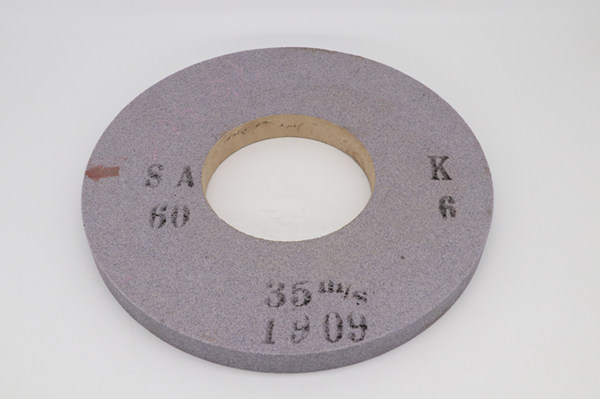Choose the right Grinding Wheel – Types of Abrasives
Choose the right Grinding Wheel – Types of Abrasives

grinding wheel
Grinding wheels consist of two main components: the abrasive (cutting) grains and the bonding material that holds the grains together. The size of the grains and their spacing, the type of the bonding material and the abrasive used will determine the structure of the grinding wheel.
This is time let’s learn the Types of Abrasives firstly !
Different abrasive types have different properties when it comes to impact resistance, strength, hardness and fracture toughness. Two types of abrasives can be used for making grinding wheels: natural and manufactured (almost entirely replaced natural materials). The abrasives consist of several chemical and mineral ingredients and the formula varies depending on the hardness of the material the wheel is intended to grind, polish or cut. There are two types of abrasive grains used to make grinding wheels. However, there are different formulas that are used even within these two categories. For example, a different formula will be used for wheels that are designed for hard steel and those designed for soft steel.
Conventional abrasives – aluminum oxide (A), silicon carbide (S), Ceramic (C)
Super-abrasives – diamond (D, MD, SD), cubic boron nitride (CBN)
Aluminum-oxide based abrasives used most often. They are used for metalwork–grinding most steels and other ferrous materials (alloy steel, high-speed steel, carbon-steel, annealed malleable and wrought iron, bronzes and other similar metals). The color and toughness of aluminum-oxide grinding wheels are influenced by the level of purity, and the abrasives used the most are 95% pure. There are various types of aluminum-oxide abrasives and their application varies depending on the grinding jobs. For example, nearly pure white wheels are the toughest, hard wearing and used for grinding heat-sensitive and high-strength steels.
Silicon-carbide based abrasives are used for cutting gray and chilled iron, cement, stone, and other non-ferrous materials (copper, brass, soft bronze, aluminum, magnesium) and nonmetallic (ceramics, gemstones, rubber), because they are harder and more brittle than aluminum-oxide wheels. However, although silicon-carbide abrasives are very sharp, they break down quickly and therefore not effective when it comes to high-pressure grinding. They work best under light pressure and are an excellent choice for putting on a smooth finish.
Ceramic grits are aluminum-oxide grits with microstructure much smaller than the conventional aluminum-oxide with a high level of purity. Its grains are sharp microcrystalline grains that cut aggressively when a light to moderate pressure is applied. Thanks to its fast cutting abilities and its strength and hardness, ceramic abrasives are used for precision grinding on titanium, stainless steel and high-nickel alloys. However, these abrasives are particularly heat-sensitive, so it is necessary to pay attention that the engineered process is executed in the correct manner.
Zirconia-alumina based abrasives are made from a different ratio of zirconium-oxide and aluminum-oxide and are in fact a type of ceramic abrasives. They are durable abrasives quite resistant to heat, used for rough grinding and cut-off operations on different steels and steel alloys.
Natural diamonds can be used for grinding very hard materials (like granite, stone, cemented carbides, marble), but have almost completely been squeezed out of the market by synthetic diamond wheels, due to the low cost of the latter. Manufactured diamonds are used for grinding aluminum oxide cutting tools, very hard steels and cemented carbide.
Cubic boron nitride is sharp, cool and extremely hard abrasive (2.5 times harder than aluminum oxide and almost as hard as diamond). It is used for grinding super-hard, high-speed steels, hardened cast irons, stainless and die steels. Metal-coated abrasives are used for general-purpose grinding, and uncoated abrasives are used in vitrified bond and electroplated metal systems.
Next bolg we will show you more about how to choose right grinding wheel , please keep following 🙂






